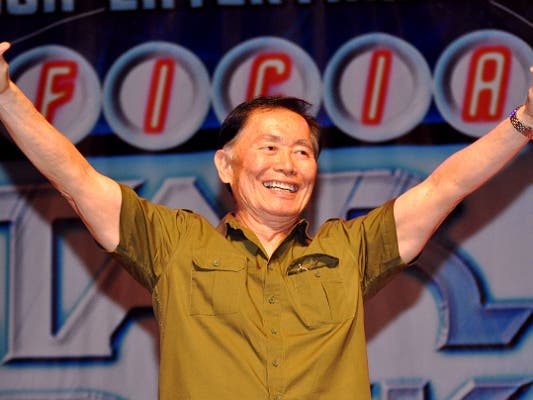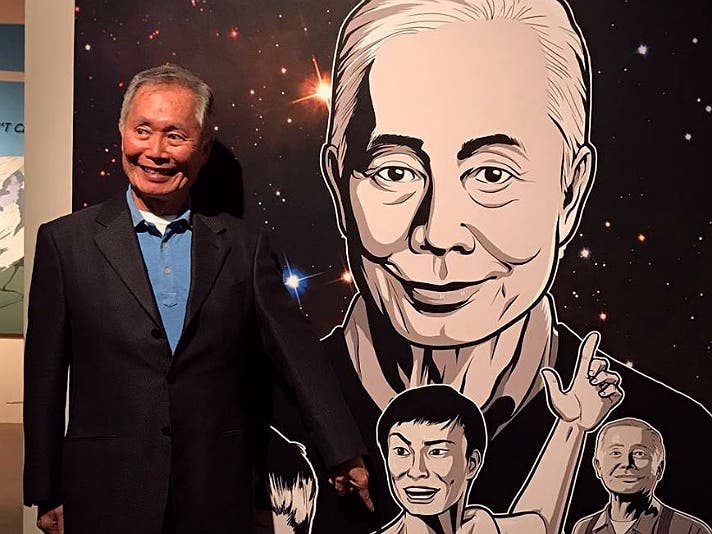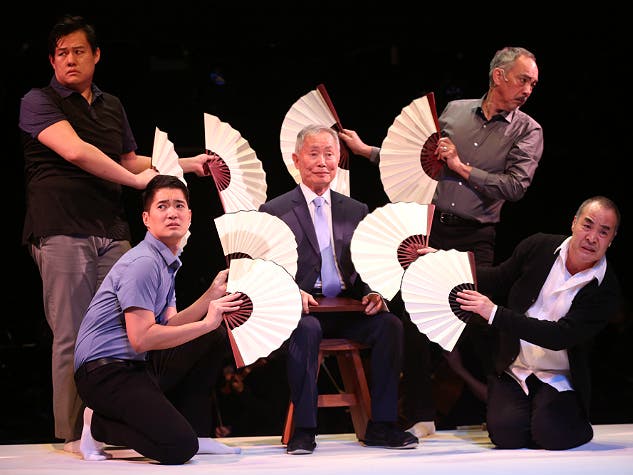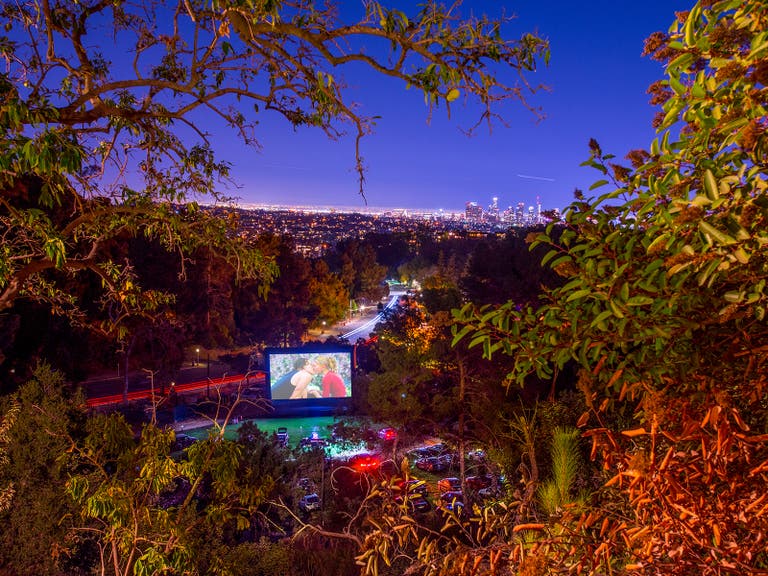Oh Myyy: 9 Things You Might Not Know About George Takei

It wasn't all that many years ago when George Takei was best known to the general population as Sulu on Star Trek. But the last decade has seen the 80-year-old actor blossom as both a public figure and a political activist. Since coming out in 2005, he has become a vocal advocate for marriage equality and gay rights. He has continued his decades-long commitment to telling the stories of thousands of Japanese Americans who were, like his family, interned in concentration camps during World War II. He's a social media star with nearly 10 million Facebook followers who lap up his punny tidbits and political posts.

In 2015, Takei made his Broadway debut in "Allegiance," a musical based on his time incarcerated during the war. He's currently the subject of an exhibition at the Japanese American National Museum, which he helped found in 1992. New Frontiers: The Many Worlds of George Takei chronicles his life and work, highlighting fascinating tidbits like his his ascent of Mount Fuji and his 1973 run for L.A. City Council. The exhibit runs through Aug. 20, 2017.
American lives don't have second acts? Takei has had half a dozen.

We caught up with him the night after the off-Broadway revival of Pacific Overtures had opened. Set in 1853, the Stephen Sondheim musical depicts the U.S.'s attempts to pry open Japan for commercial exploitation — from the point of view of the Japanese. Takei was sipping hot water for his throat when we spoke, but his baritone remains as distinctive as ever.
1. What he misses most about Los Angeles:
"I miss the weather. The wintertime here is fierce and the summertime is equally, in a different sense, unbearable. The humidity is just killing."
2. What he misses most about Los Angeles... besides the weather:
"I miss all of L.A. but particularly Downtown. Downtown is so dynamic. Back in the 1950s we had a height limit and I remember when the height limit was eliminated. Now we have all these soaring buildings and it is an urbane metropolis."
3. He adores L.A.'s theater scene:
"We've been subscribers to Center Theatre Group for ages. We miss the Ahmanson, the Mark Taper Forum, the opera, the symphony, Disney Hall and the Dorothy Chandler Pavilion. I miss the civilized theater-going of strolling on the plaza of the Music Center before going to the theater, having had dinner at Kendall's Brasserie before [a show]."
4. He was almost an architect:
"My father was in real estate. He wanted me to be an architect. I think he fancied me designing buildings and his company developing them and calling the company 'Takei and Son Real Estate Development.' So I began my college studies [at UC Berkeley] as a good son accommodating my father's wishes. But after two years, the fire burning in me got hotter and hotter so I came back down to Los Angeles." Takei ended up earning a bachelor and master's degree in theater from UCLA.
5. He knows his L.A. history:
"During World War II, Japanese Americans all had to be interned. But the Nishi Hongwanji Buddhist Temple had one priest who did not have to be interned. He was a Caucasian man named Julius Goldwater, a distant cousin of Barry Goldwater. The temple was left in his care as Little Tokyo was vacated. We had a great migration of African Americans from the south to L.A. and Little Tokyo became an African American community called Bronzeville. They asked Reverend Goldwater if they could hold their ceremonies in the sanctuary and he opened up the temple for their use. During the war, that Buddhist temple rocked with the foot-stomping, hand-clapping hallelujahs of African American Southern Baptist Sunday observances."
6. He also still appreciates architecture:
"In the mid 1920s, the congregation wanted a classic Japanese temple. They hired an architect who was also a devotee of Art Deco. So when you look at the facade of that building, you will see the classic Japanese Buddhist ceremonial entrance but beside it you see a line of Art Deco Egyptian pillars. Nowhere in the world will you find a Buddhist temple quite like that." That temple would eventually become the original site of the Japanese American National Museum.
7. He supported JANM long before he was an exhibit:
"[The museum] is really my baby. I've been serving on the board ever since its founding. When we opened in 1992, we were going to hold our opening ceremonies in a parking lot across the street. I was the master of ceremonies. The L.A. Riots had broken out. Because of the smoke rising up from the southeast and west, we had to move that into the building itself."
In 2008, he and his partner Brad got married in JANM's Democracy Forum.
8. He has mixed feelings about media depictions of Asian Americans:
"It has been both our adversary as well as our aspirational location. It was because of stereotypes perpetuated by the media that made possible the internment of my family and 120,000 other Japanese Americans during the war. My mission in life has been to raise awareness of that chapter of American history."
9. What he'd like to do next:
Takei says he'd love to see a revival of "Allegiance" in Los Angeles.

